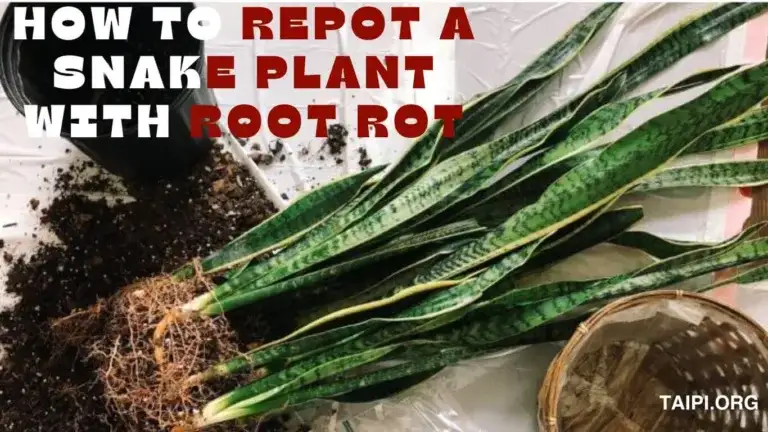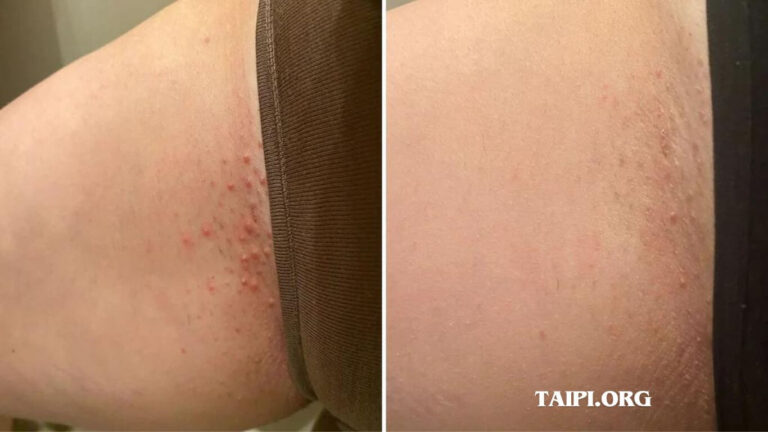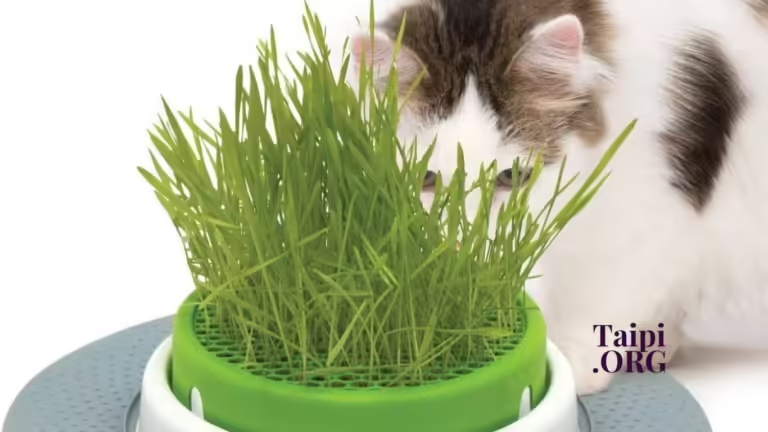Which is the Best Fertilizer for Snake Plant?
DO YOU have a snake plant that you love so much but when it comes to the time of feeding it, you wonder, which is the best fertilizer for snake plant? Well, you are now sorted. Apart from telling you what the best fertilizer for snake plant should have, I will give you a list of the eight best fertilizers for the snake plant to choose from. But first things first.
A balanced, all-purpose liquid fertilizer with an NPK ratio of 10-10-10 or 20-20-20, diluted to half or quarter strength, applied once a month during the growing season, is suitable for snake plants.
8 Best Fertilizers for the Snake Plant
Here’s a list of eight regarded fertilizers suitable for snake plants. These fertilizers are best suited for your snake plant because of their balanced nutrition:
1. Miracle-Gro Water Soluble All Purpose Plant Food (24-8-16)
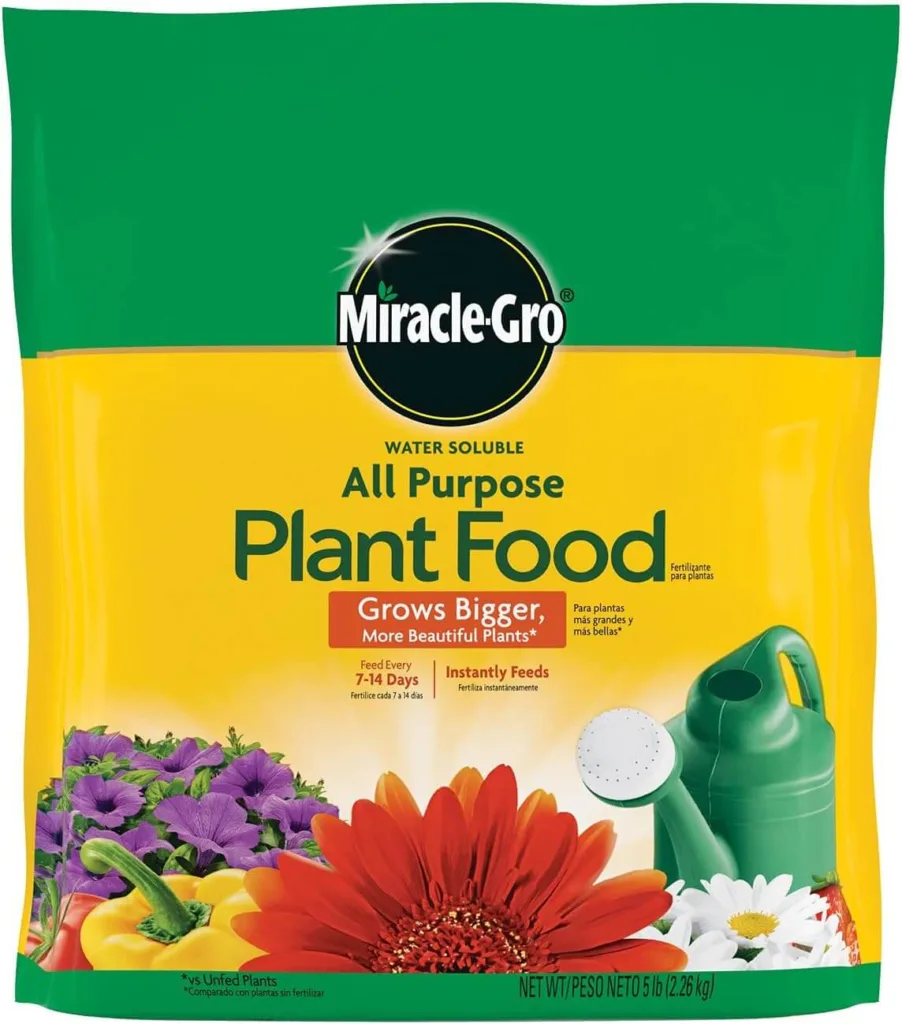
This is a well-balanced, general-purpose fertilizer that works for a variety of plants, including snake plants. It’s water-soluble and can be applied during the growing season.
Apart from your houseplants, Miracle-Grow is ideal for trees, shrubs, roses, and vegetables. According to the manufacturer, you will get good results by feeding your snake plant every 1-2 weeks.
The resealable and waterproof bag makes it easy to store the fertilizer. Besides, it comes with a measuring scoop, so that you do not under or overfeed your snake plant.
2. Schultz Cactus Plus Liquid Plant Food 2-7-7
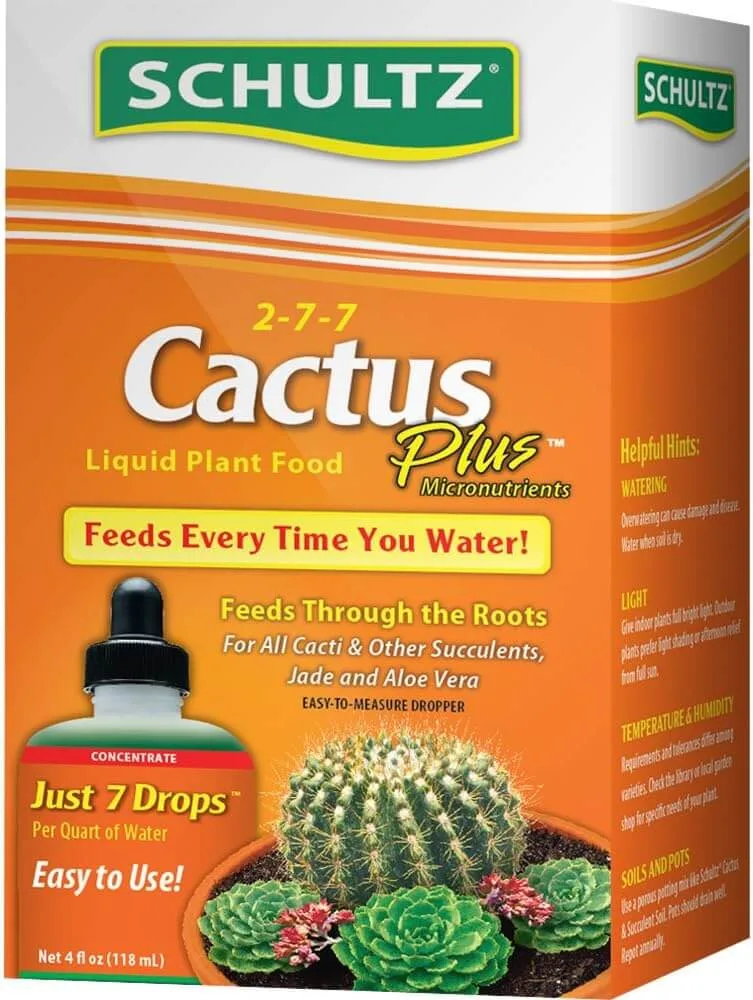
This 4-ounce liquid fertilizer, specifically formulated for cacti and succulents, this fertilizer has a lower nitrogen content to prevent over-fertilization. It’s suitable for snake plants and you need to dilute it before applying.
With just seven drops of water, you will improve the quality of your snake plant, which will look distinct from those that are not fed.
3. Osmocote Smart-Release Plant Food Flower & Vegetable (14-14-14)
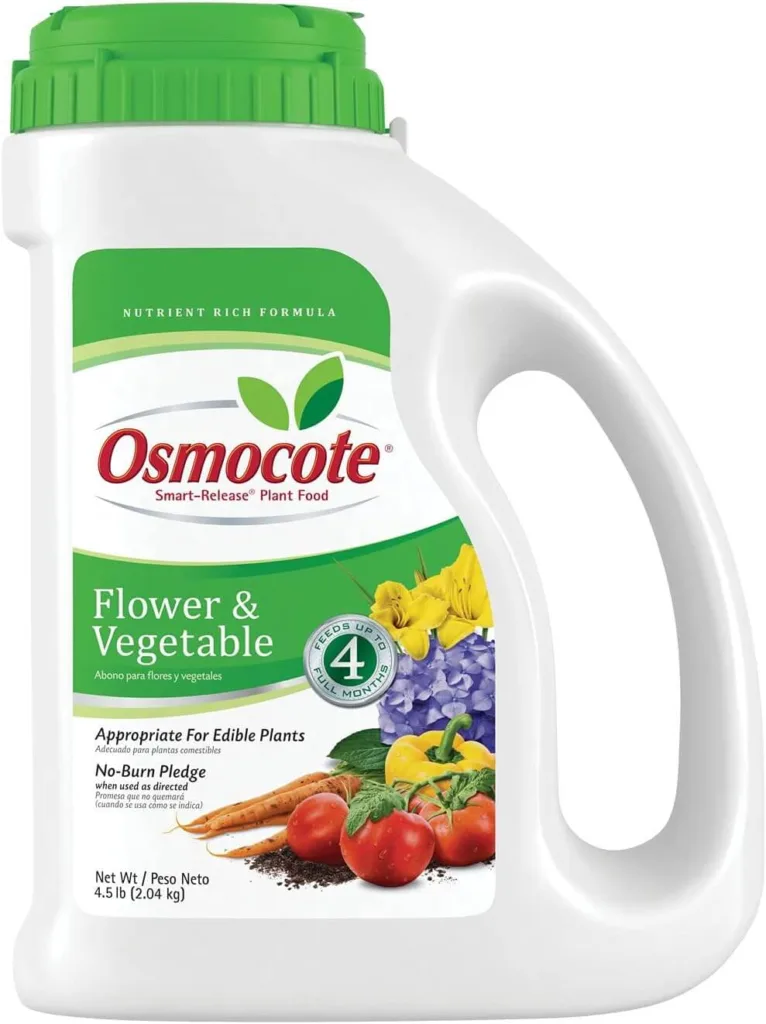
Labeled, ‘A Must Have for Gardeners’, Osmocote is known for its slow-release qualities. This balanced formula provides nutrients over an extended period, reducing the risk of over-fertilization. Suitable for snake plants when used as directed.
Once you apply this fertilizer, you will be guaranteed that your plant will be properly nourished for four months.
4. Jobe’s Organics Succulent & Cactus Granular Fertilizer (2-7-4)
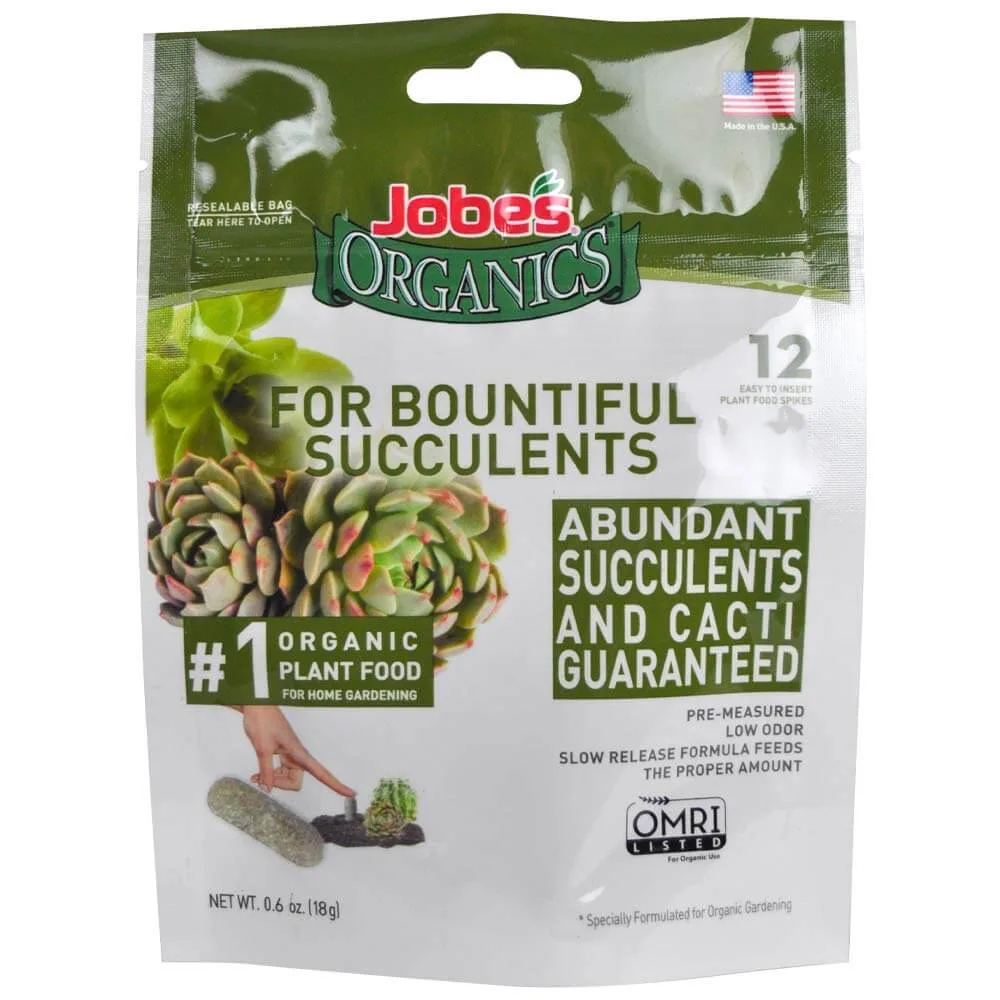
For those preferring organic options, Jobe’s Organics provides a granular fertilizer with a lower nitrogen content, promoting balanced growth for succulents like snake plants.
Dubbed ‘the new innovation from Jobe’s’ this fertilizer releases its nutrients to your snake plant slowly but surely.
Some of the things you will love about this product are it is pet-friendly and has low odor.
Besides, once you apply as directed, the nutrients will remain in the soil to sustain your snake plant for twelve months.
5. Espoma Organic Cactus! Plant Food (2-7-4)
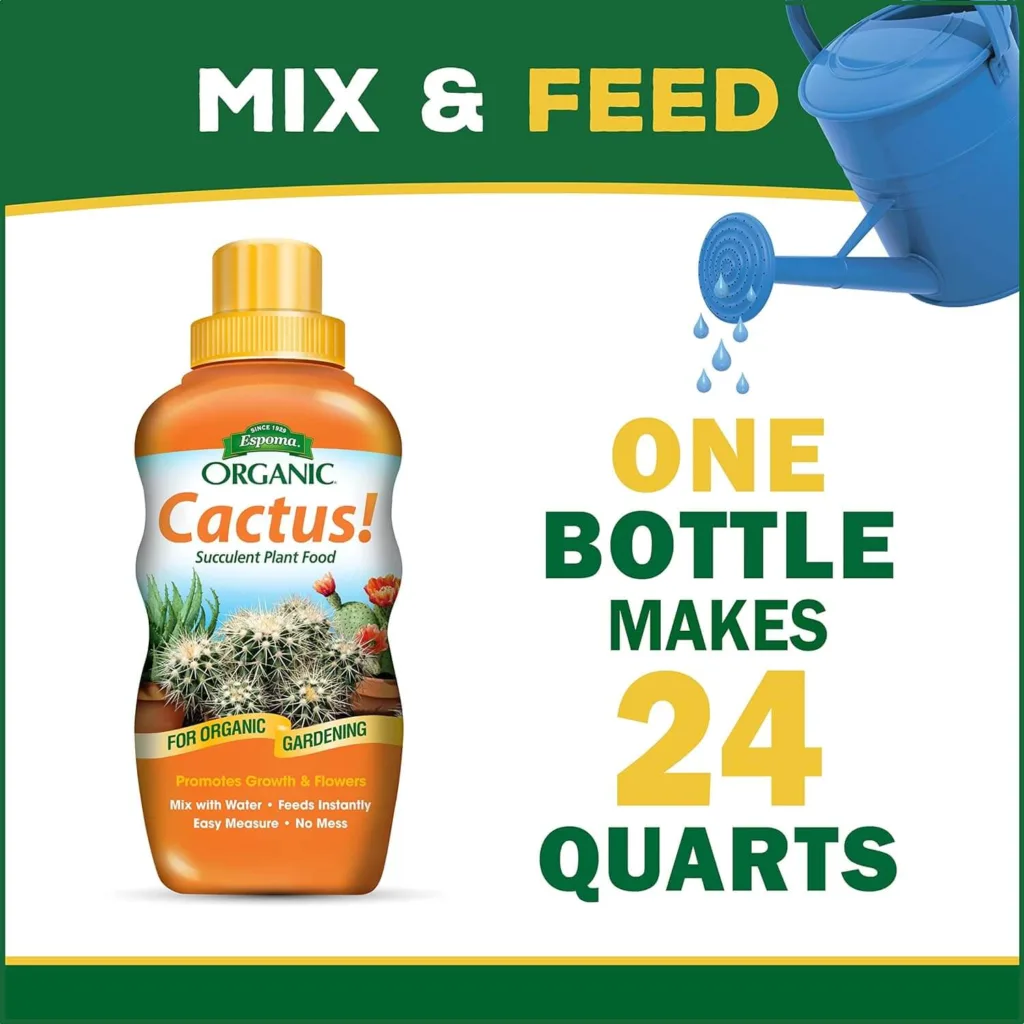
Another organic choice is Espoma’s Cactus! Plant Food. This best fertilizer for snake plant is relatively new to the market but has so far received unprecedented acclaim.
Espoma is formulated for cacti and succulents, which means, it’s a slow-release granular fertilizer that can provide a gentle and steady nutrient supply.
For excellent results, use this product on your snake plant every 2-4 weeks.
6. EarthPods Premium Cactus & Succulent Plant Food (2-4-2)
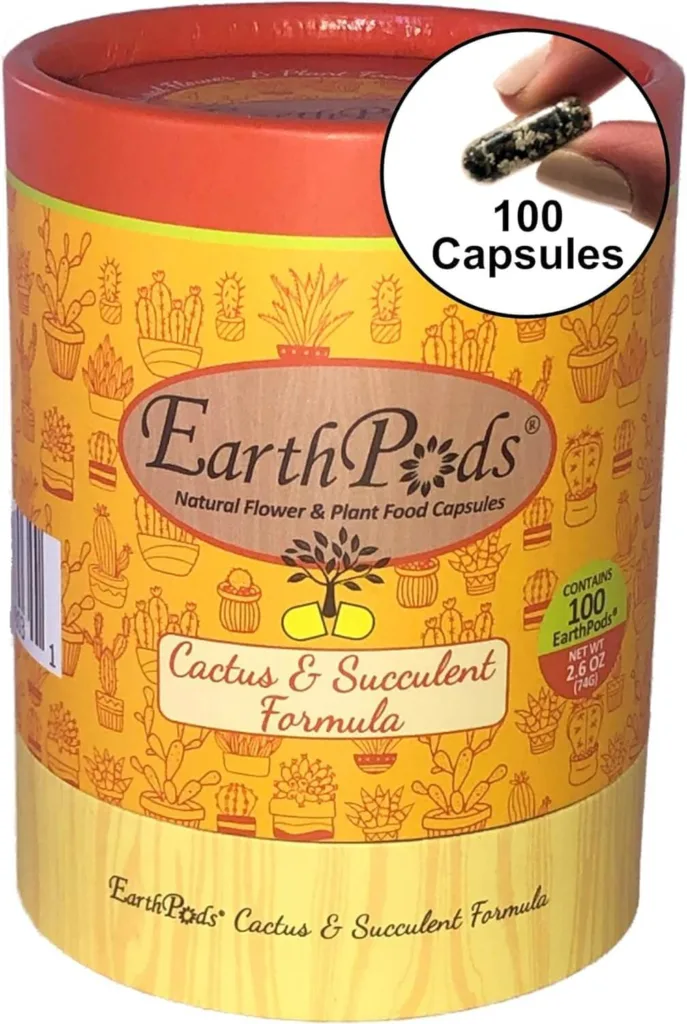
There are 100 pre-measured, easy-to-use capsules containing organic nutrients in a 2.6 oz container. The Cactus & Succulent formula is specifically designed for plants like snake plants, providing a balanced nutrient profile.
The product delivers tremendous results only if applied as directed.
For instance, the manufacturer says, “Push 1 EarthPod capsule into potting soil mix near the center of plant or open the capsule & spread contents if grown in bark/pebble substrate, then just water!”
7. Grow More 5010 All Purpose Fertilizer (20-20-20)
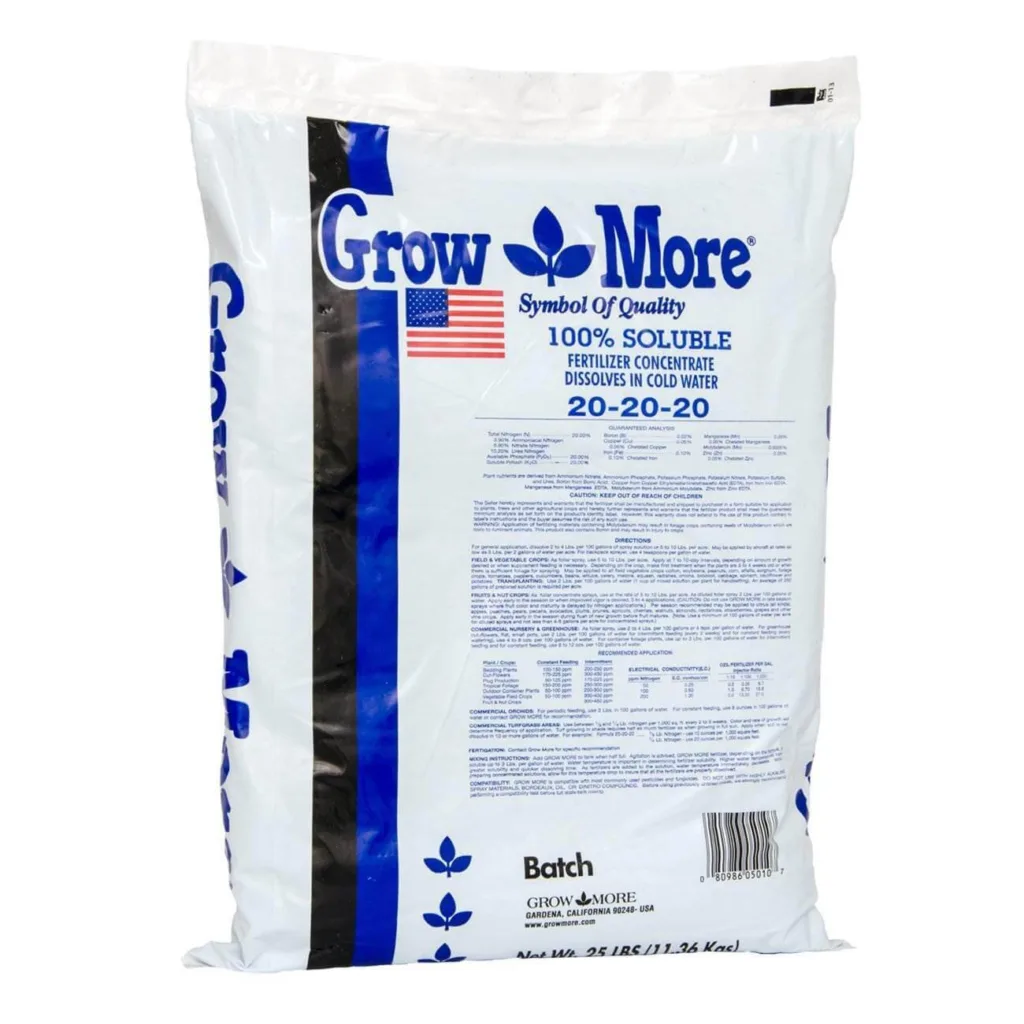
There are two types of Grow More best fertilizer for snake plant. One is Grow More 5010 (pictured ⬆) and the other is Grow More General. I am talking about the former, Grow More 5010.
This water-soluble fertilizer has a balanced NPK ratio, making it the best fertilizer for snake plant and suitable for a wide range of plants.
Thanks to its strength, you can mix 1 teaspoon of Grow More 5010 with a gallon of water and feed several snake plants.
8. Dyna-Gro GRO-008 Grow 8 oz Plant Food
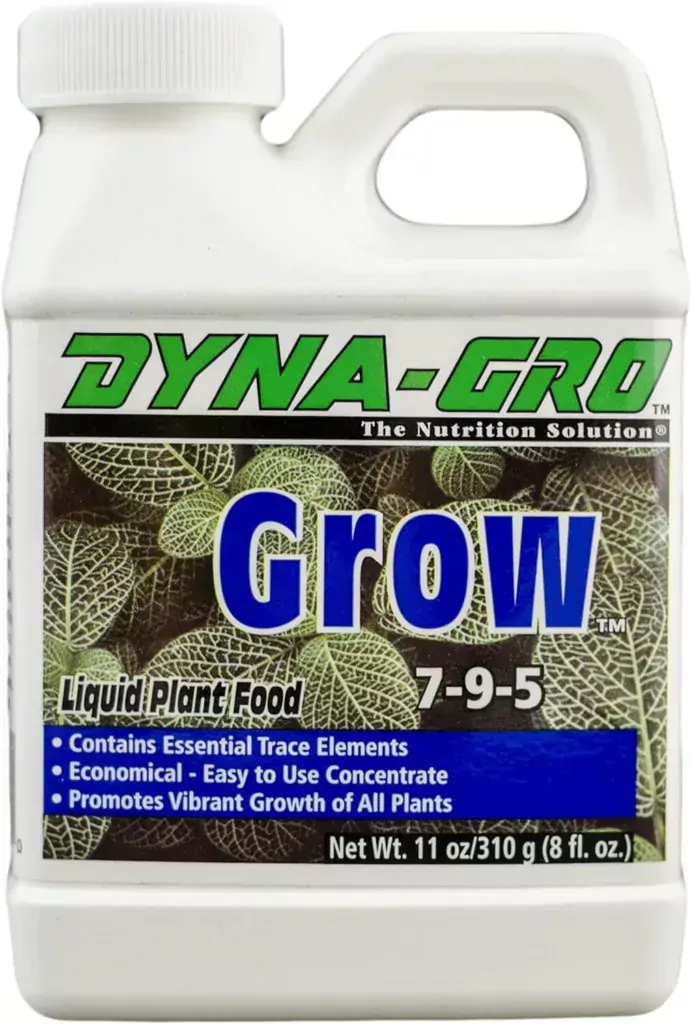
With a slightly higher phosphorus content, this liquid fertilizer is designed to promote flowering and root development. It can be suitable for snake plants during their active growing season.
The other thing you will appreciate about this product is its ability to revitalize poor rocky soils. Besides, it does well in hydroponics.
When to Fertilize the Snake Plant
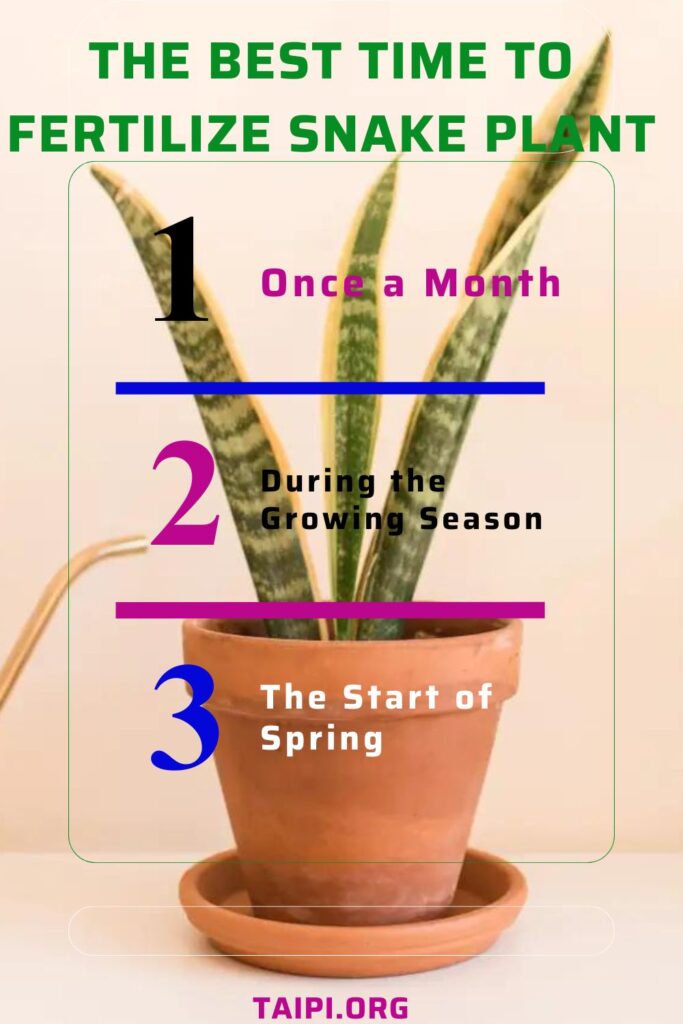
Fertilizing snake plants (Sansevieria) is a straightforward task, but it’s essential to time it correctly to support their growth without causing harm.
I have often mentioned that Snake Plants are resilient and can thrive in low-maintenance conditions. But when is the right time to fertilize these hardy houseplants?
Growing Season
The primary period for fertilizing snake plants is during their active growing season, which typically spans spring and summer.
During this time, the plant experiences increased metabolic activity and benefits from additional nutrients to support growth.
Spring Start
Start fertilizing your snake plant in the early spring, around March or April, as daylight hours increase, and the plant naturally enters its growth phase.
This timing aligns with the plant’s natural growth cycle, ensuring that it receives the nutrients it needs when it’s most active.
Frequency
Snake plants don’t require frequent fertilization. Once a month is generally sufficient during the growing season. Over-fertilizing can lead to salt buildup in the soil, potentially harming the plant’s roots.
Skip Fertilization in Fall and Winter
As fall approaches, and especially during winter, the growth of snake plants slows down. This is a period of dormancy or reduced activity.
During fall and winter, it’s advisable to skip fertilizing altogether or, at the very least, reduce the frequency to avoid providing nutrients when the plant doesn’t need them.
Observation and Response
Pay attention to the health and appearance of your snake plant. If it exhibits signs of robust growth, vibrant leaf color, and overall vitality, your fertilization schedule is likely adequate.
On the other hand, if the plant shows signs of slow growth or pale leaves, you might consider adjusting your fertilization routine.
Soil Moisture and Application
Always apply fertilizer to moist soil. Water the plant a day or two before applying the fertilizer. This helps prevent potential root damage and ensures better absorption of nutrients.
Dilution
Whether you’re using a liquid or granular fertilizer, dilute it according to the package instructions. Snake plants are sensitive to salt, and using a diluted fertilizer helps avoid over-fertilization.
Special Considerations
If you’re using a slow-release fertilizer, apply it at the beginning of the growing season, following the package instructions. This ensures a gradual release of nutrients over an extended period.
In summary, the best time to fertilize snake plants is during the active growing season in spring and summer, approximately once a month.
Skip fertilization during the fall and winter or reduce the frequency, and always observe the plant’s response to adjust your fertilization routine accordingly.
As with any houseplant care, consistency and moderation are key to maintaining a healthy and thriving snake plant.
Snake Plant Fertilizing Pro Tips
Here are some pro tips to enhance the care and fertilization of your snake plant:
Use a Balanced Fertilizer
Choose a balanced, all-purpose fertilizer with an NPK ratio of 10-10-10 or 20-20-20. This provides a well-rounded mix of essential nutrients without promoting excessive foliage growth.
Go Easy on Nitrogen
Snake plants generally prefer slightly lower nitrogen levels. Nitrogen promotes leafy growth, and while a little is beneficial, too much can lead to weak, floppy leaves.
Opt for fertilizers with a moderate nitrogen content.
Dilute Fertilizer for Indoor Plants
When using liquid fertilizer for indoor snake plants, always dilute it to half or quarter strength. Indoor plants are more sensitive to fertilizer concentration, and dilution helps prevent over-fertilization.
Consider Slow-Release Fertilizers
Slow-release fertilizers provide a steady supply of nutrients over time, reducing the risk of overfeeding. These can be convenient, especially if you tend to forget or are unsure about regular fertilizing schedules.
Monitor Soil pH
Snake plants prefer slightly acidic to neutral soil pH. Regularly check the pH of the soil, and if necessary, adjust it using appropriate amendments. This ensures optimal nutrient absorption.
Observe Plant Behavior
Pay attention to your snake plant’s behavior. If it’s thriving and displaying healthy growth, your fertilization routine is likely on point.
If you notice any signs of stress, such as yellowing leaves or stunted growth, reassess your fertilizing practices.
Rotate Fertilizers
Alternate between organic and synthetic fertilizers. This provides a broader spectrum of nutrients and helps maintain soil health over the long term.
Top-Dress with Compost
Occasionally top-dress the soil with well-rotted compost. This provides organic matter, improves soil structure, and contributes to a slow, natural release of nutrients.
Regularly Inspect for Pests
Pests can stress the plant and affect its nutrient absorption. Regularly inspect your snake plant for pests like spider mites or mealybugs. If present, address the issue promptly.
Adjust Fertilization Based on Growth Stage
During periods of active growth, such as the spring and summer, you can slightly increase the frequency of fertilization. Reduce or skip fertilization during fall and winter, when growth slows down.
Remember, the key to successful snake plant care, including fertilization, is to strike a balance.
It’s better to provide a bit less fertilizer than risk overdoing it.
Adjust your approach based on your observations of the plant’s health and growth patterns.
Frequently Asked Questions (FAQs)
Q: How often should I fertilize my snake plant?
A: Fertilize your snake plant once a month during the growing season, which typically spans spring and summer. Skip fertilization or reduce the frequency in the fall and winter when the plant’s growth slows down.
Q: What type of fertilizer is best for snake plants?
A: A balanced, all-purpose liquid fertilizer with an NPK ratio of 10-10-10 or 20-20-20 is suitable for snake plants. Alternatively, specialized succulent or cactus fertilizers with lower nitrogen content can also be used.
Q: Should I dilute the fertilizer for my snake plant?
A: Yes, it’s recommended to dilute liquid fertilizers to half or quarter strength before applying them to snake plants. Dilution helps prevent over-fertilization, which can be harmful to the plant.
Q: Can I use organic fertilizers for snake plants?
A: Yes, organic options like well-rotted compost or specialized organic cactus and succulent fertilizers can be used for snake plants. These provide nutrients in a natural and slow-release manner.
Q: Is it necessary to adjust fertilization based on the age of the snake plant?
A: Yes, adjust the fertilization routine based on the growth stage of the snake plant. During periods of active growth (spring and summer), you can slightly increase the frequency. In fall and winter, when growth slows, reduce, or stop fertilizing to avoid overfeeding.
Final Thoughts on the Best Fertilizer for Snake Plant
Remember, regardless of the fertilizer you choose as long as it is the best fertilizer for snake plant, always follow the recommended application rates on the product’s packaging.
Avoid over-fertilizing to prevent potential harm to your snake plants. Adjust the frequency and strength based on the specific needs of your plants and their growth conditions.



